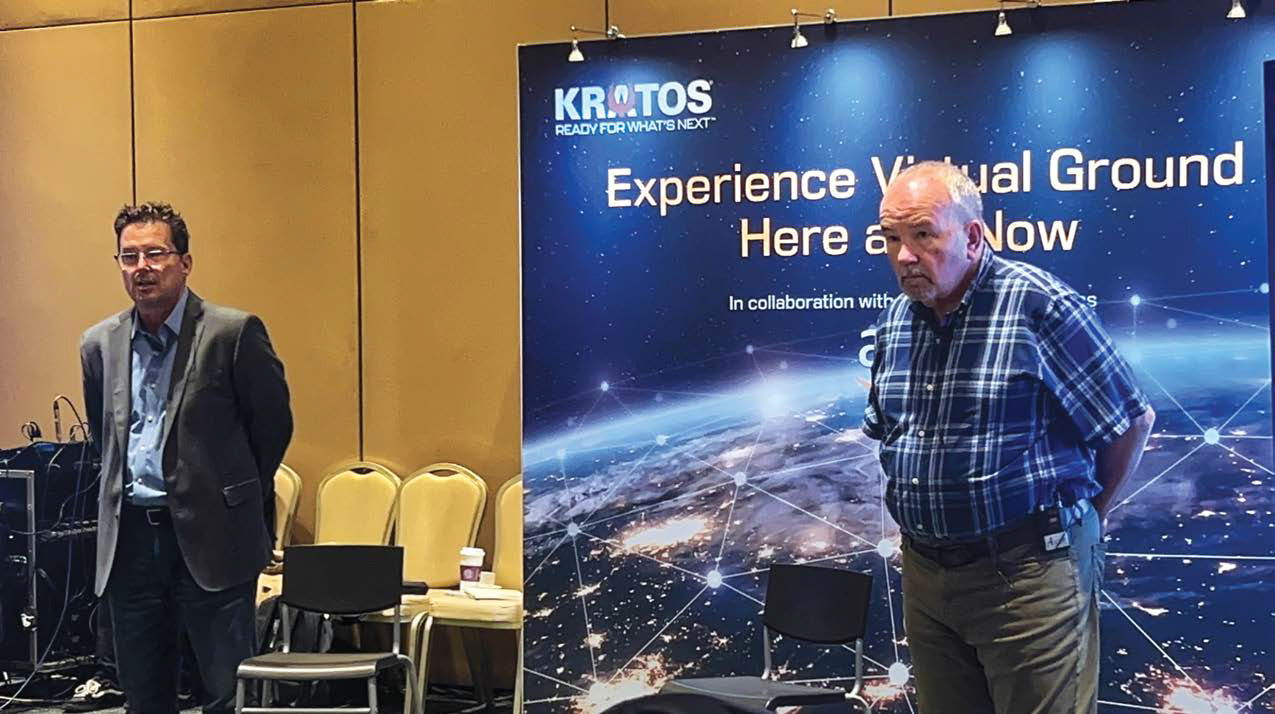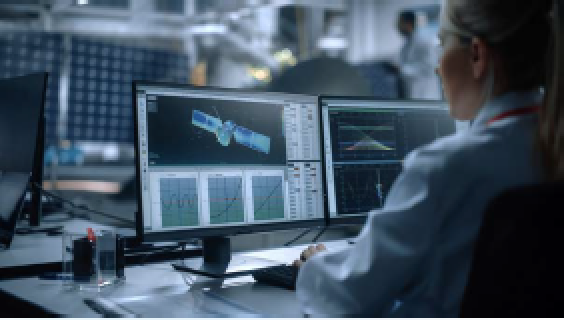In the cloud is an abstract concept — you may not be able to touch your data and services, but with the cloud they exist in perhaps the most flexible, distributed, on-demand compute environment there is.

Want a new application or service? Just load it up. Want it available here, there, or in 10 places around the globe? No problem. Pay for a service only when needed? Sure. The possibilities are endless now that cloud computing resources, such Amazon Web Services (AWS), are available on demand from any location.
Unlike traditional satellite ground systems that have been constrained by physical hardware limitations and lead times, with little abstraction or adaptability, cloud computing environments offer the opposite with high flexibility and accessibility. Today, the signal processing to support uses such as EO and SATCOM can be abstracted to run as software in the cloud for ground functionality virtually anywhere.
For example, during a demonstration in Singapore, AWS and Kratos used OpenSpace®, a fully virtualized and software-defined ground system to provision a series of virtual SATCOM modems on servers and in the cloud. The OpenSpace software ran on a server in a conference room connected by the Internet to a virtual modem running in the AWS cloud.
To fire up a new SATCOM link, a user selected a preconfigured modem from a menu. Less than a minute later, the new signal began flowing and users could see the CPUs and memory usage confirming the active SATCOM link. They could monitor service chains, incoming signals, and available capacity through a browser.
Enabling New Services + Business Models
The demonstration revealed how satellite operators are no longer bounded by fixed ground system infrastructure and can achieve new levels of global reach, resilience, and on-demand capacity.
“This creates a whole new class of occasional-use services, including satellite news gathering, disaster response or event-based connectivity,” said Greg Quiggle, Senior Vice President of Product Management at Kratos. “Typically, an operator has just a bit of notice before heavy demand hits and then demand goes away. Instead of buying a hardware-based system that sits idle most of the time, you can leverage the cloud with AWS, turn it up and pay for it as you need it, and then turn it down when you’re done.”
Operators can not only provision services in minutes but also consider new types of service that wouldn’t have been economically or technically feasible in the past. They can take advantage of growing capacity, multi-orbit regimes and other innovations in space.

Greg Quiggle of Kratos (left) and Bill Carlin of AWS (right) demonstrated virtual SATCOM in the cloud.
“The idea is, it’s not static. It’s not stuck in a particular planning cycle. You’re able to react dynamically,” said Bill Carlin, Global Satellite Solutions Lead for AWS.
Software Drives The Value
Today, functions traditionally performed using hardware in a teleport now exist as software. Virtual functions like modems, channelizers, splitters, and combiners are created in containerized software applications that run on the commodity processing found in servers, edge devices, and the cloud. AWS offers that computer commodity all over the world and on demand.
“Because it’s generic compute, you can also integrate other third-party software applications on the same device,” said Quiggle.
Virtual routers, SD-WAN, and advanced 5G wireless services, for example, are among the applications that are already virtualized to run together in the same environment.
Virtualization and the cloud help reduce costs and also make the underlying infrastructure less complex as well as allowing customers to select open technologies that eliminate vendor lock and work best for their workloads.
For example, with OpenSpace and AWS, satellite operators and network service providers no longer have to buy proprietary hubs and modems from the same vendor, which has been a significant impediment. OpenSpace and other software applications can be installed on any generic computer using existing servers or those purchased from an IT vendor.
Once satellite spectrum is digitized, it can be routed as standard IP packets for processing anywhere. Bandwidth can be channelized down into many small streams that can be sent to virtual modems, combiners or hubs for signal processing to support a range of dynamic applications, including SATCOM and EO.
New Flexibility For Operators
With Kratos and AWS, satellite operators can flexibly deploy signal processing on their own servers, in the cloud, or at the network edge as part of a disaggregated architecture.
“What we’re trying to do in the cloud is offer you flexibility, the ability to turn it on, turn it off, have it operate in one place, then another or both, or 25 all at a time,” said Carlin.
If a customer needed 10 MHz of bandwidth, Quiggle said the operator could allocate that capacity on a virtual channelizer through the cloud, allowing the customer to orchestrate the hub and instantiate service independently when it’s needed.
The Move to Automating The Network
Quiggle described OpenSpace as a “software-defined network built specifically for space” that can automate the network end-to-end. A key component is service orchestration which, as in telecom, allows the network to scale up and down automatically to enable services to be delivered as demand changes.
When a software-defined satellite and the software-defined ground are paired together, the network can be automated and optimized for power, frequency and SLAs to meet customer needs.
Space and ground components work seamlessly to detect changes in customer demand and dynamically reconfigure capacity and service coverage. Now customer services can be changed and deployed in minutes instead of weeks and months using the traditional approach.
The Path To Getting There: Savings Can Scale With Growth
Whereas traditional teleports filled with different RF equipment, servers, and baseband infrastructure acquired through the years can eat up considerable costs due to power, space and cooling, by virtualizing and moving to the cloud, satellite operators can potentially realize significant cost savings.
Quiggle of Kratos added that operators no longer have to buy costly racks of equipment to support the highest level of demand when launching a satellite. They can start small and as they add customers, they can orchestrate more service chains and add servers as needed, growing and scaling like in a typical IT type environment.

Whether they do it faster or more incrementally, satellite operators and network service providers can leverage virtualization and the cloud at their own pace and in ways that meet their unique goals and business models.
This recent demonstration shows there is now a proven pathway to moving to a more dynamic ground system by using the cloud.
KratosDefense.com/OpenSpace



